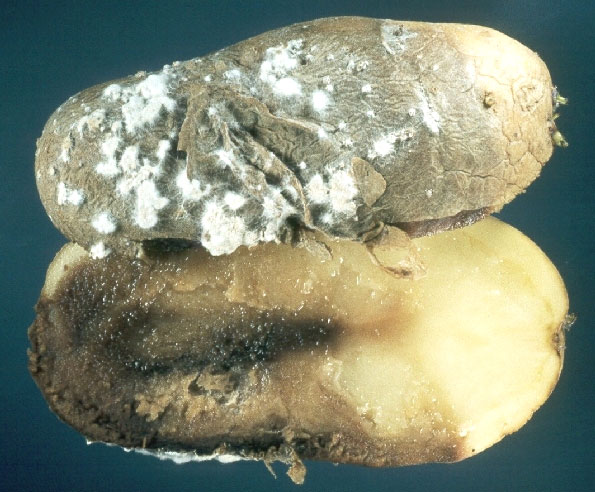The most important factor when completing an inspection is making the determination if the lot is in grade or out of grade. Practically all the U.S. Grade Standards are fairly easy to comprehend. They will usually have wording such as: 10% total defects, including 5% serious damage, including 1% decay. Some examples:
- 12% damage by bruising and 1% decay, means you have 13% total defects, which exceeds the total tolerance of 10%- Result: Fails to grade.
- 9% damage by bruising, including 6% serious damage, no decay, which exceeds the 5% tolerance for serious damage- Result: Fails to grade.
- 4% damage by bruising, 5% decay, which exceeds the 1% tolerance for decay- Result: Fails to grade
But to explain the potato tolerances is confusing, to say the least. Just ask any 10 USDA inspectors to explain them and you might get 10 different interpretations. Direct from the U.S. Standards for Potatoes:
- 10% total defects, including 8% for permanent defects.
- 7% for external defects, including 5% for external permanent defects
- 7% for internal defects, including 5% for internal permanent defects
- 2% soft rot.
We know for a fact the defects cannot exceed 10%. We also know for a fact you cannot have more than 7% external defects, or 7% internal defects. And we also know we cannot have more than 2% soft rot.
But what is confusing, are potatoes allowed to have 7% external defects AND 2% soft rot? Ask the USDA, you may be surprised. I was. There are two schools of thought. 1) Soft rot is almost always detected externally, so it should be considered an external defect, meaning the combination of external defects and soft rot cannot exceed 7%. 2) But the logical USDA inspectors rely on the wording of the standard, and the standard does not state the 2% soft rot is included in the 7% tolerance for external defects. Here is a realistic example:
- 4% sunburn
- 3% silver scurf
- 2% surface discoloration
The above external defects total 9%, meaning the lot would be out of grade as it exceeds the 7% tolerance for external defects.

But what if you found:
- 4% sunburn
- 3% silver scurf
- 2% soft rot
Some USDA inspectors would say this is in grade, as the external defects total 7% (allowed) and the soft rot totals 2% (allowed). But other USDA inspectors would say this fails to grade, as the external defects total 9%, exceeding the 7% tolerance allowed for external defects.
So what is the correct answer? I contacted the Assistant Branch Chief for the Standardization Section of the USDA and was told the 2% soft rot tolerance is included in the 7% tolerance for external defects, meaning in the example shown above, the lot would not meet grade.
Hopefully the USDA will correct the standard to clarify the wording, as interpreting the tolerances should never be confusing.

2 Comments on “Potatoes- Confusion with Tolerances”
So does that mean if you inspect a load and you have 4% external defects and 2% soft rot it makes a grade? I’m trying to understand the difference of why 2% soft rot doesnt automatically fail the lot. Typically decay 1% allows you to fail the lot. Why is it different here, because it is called soft rot? thank you.
Barb, yes you are correct, it fails to grade. Grade standards are strongly influenced by the industry it represents…..and the potato growers along with the USDA made this decision.